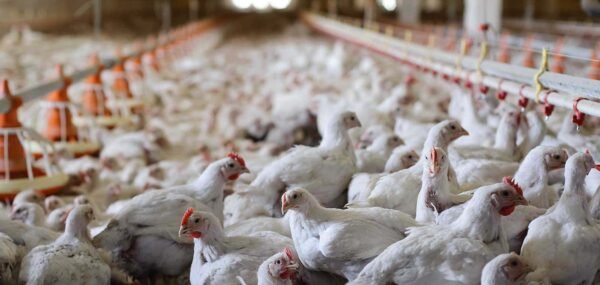The emergence of Egg Drop Syndrome 76 in American hatching mothers, registration of the first case.

by / Professor Dr. Salah Mahdi Hassan
Consultant and expert in poultry health and production
23/ 8/ 2024
A recent study published in the American Journal of Avian Diseases on 8/9/2024 mentioned in detailed a case of Egg Drop Syndrome 76 in a broiler breeder flock in the fall of 2022. It appears to be the first case to be recorded in the United States, as this syndrome is common in layer flocks.
Researchers from Gaydos Technical Services, LLC and Michigan State University worked together to study the syndrome in a 34-week-old broodstock flock of four production parlors, with hens experiencing a 15% reduction in egg production over a seven-day period.

On-site examination revealed a significant number of shellless eggs, deformed eggs, and pale eggs. No increase in daily mortality rate was recorded and no respiratory signs were found in the affected flock.
Clinical signs of egg infection were observed in only one of the four halls in the project at 34 weeks of production, followed by the occurrence of infections in the other halls at 36 weeks and 39 weeks of production (5-week prevalence rate). The minimum rate of decline in egg production was 55% compared to the required production rate according to the production guide, which is 80%.
The syndrome was diagnosed by PCR testing of light-shelled or shellless eggs, which confirmed the presence of Aviadenovirus-group I, and by examination in two separate laboratories.
Also, the hemagglutination inhibition test (HI test) was performed on serum samples from a number of chickens and the four halls, which showed positive results for the EDS 76 infection case, and only in the halls that showed a decrease in the egg production rate and the quality of the produced eggs. It should be noted that samples from the trachea of the infected chickens were sent for examination and search for Newcastle disease and infectious bronchitis (IB) viruses, in addition to testing both the cecal tonsils and the oviduct for the IB virus, and the results were all negative for the two viruses. Also, the histopathological examination of the samples sent for examination did not show any significant pathological changes.
Over another four weeks, egg production increased to 74%, which was consistent with the standard production rate, and the level of antibodies to the causative virus was stable and homogeneous in most of the infected flock, but the rate of hatchable eggs remained below the level for another two weeks due to the continued presence of light-shelled eggs during that period.
The investigations and communications that were conducted to determine the causes of infection in the hatching egg mothers raise doubts about the fact that it is always known that EDS76 syndrome infections affect table egg hens. Indeed, the infected mother farm was close to layers’ farms suffering from infection with this syndrome, which raises the possibility of environmental transmission of the causative virus.

Therefore, researchers believe that there is a state of immunosuppression that affected the chickens of the parent flock, which led to the occurrence of the syndrome. Therefore, it seems that the accurate application of biosecurity and the use of effective sanitizers, in addition to the use of vaccines, are among the most important effective options to prevent the recurrence of this syndrome.
The important conclusion of this study is that it is recommended that hatchery projects located within a geographical area where there are table egg projects should raise their flocks with an acceptable level of biosecurity. It cannot be assumed that a disease is impossible to occur, no matter how low the incidence rate.



